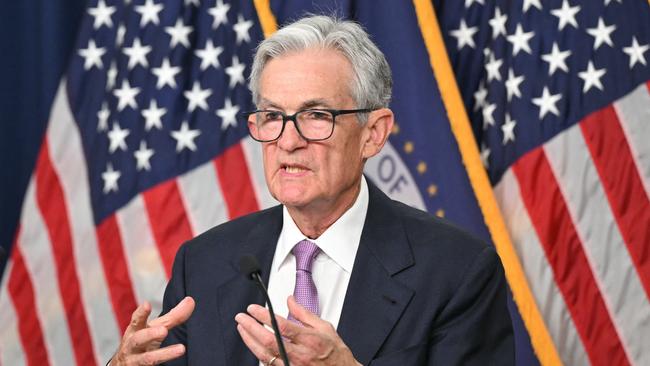US interest rate cuts: how they affect your money and mortgage
The US has cut official interest rates for the first time in four years, but don’t hold your breath for Aussie cuts to come quickly.

The biggest cut in US interest rates in 16 years is good news for Australian borrowers hoping for Reserve Bank rate relief at home, but not yet.
Economists say the US Federal Reserve’s 0.5 percentage point official interest rate cut shows the global fight against inflation is succeeding, but they expect Australia’s RBA to lag other countries in cutting rates.
Falling US interest rates should strengthen the Aussie dollar against the US dollar, which is welcome news for Aussies heading off on overseas holidays, and should slow imported inflation as the cost of goods we buy from overseas become cheaper.
Finance analysts say share prices often rise once rate cuts begin, which would be more fuel for stock markets already at record highs.
Central banks have been cutting interest rates in Europe, Britain, Canada and elsewhere, but CommSec senior economist Ryan Felsman said Australia was “going to be late to the party”.
“Our inflation is still higher than the US – we still have a way to go in our inflation fight.”
The new US rate of 4.75-to-5 per cent remains above the RBA’s current cash rate of 4.35 per cent.

While financial markets are tipping RBA rate cuts late this year or early next year, RBA governor Michele Bullock has continually said there are no plans for near-term rate cuts.
The Commonwealth Bank had been forecasting a RBA cut in November, but on Thursday pushed that back to December following steady unemployment data.
“The important thing is we have seen the peak in interest rates in Australia by the look of things,” Mr Felsman said.
“Banks have been reducing term deposits and fixed mortgage rates in anticipation of rate cuts early next year.”
The Australian dollar has climbed from US65c in early August to US68.2c late on Thursday, and Mr Felsman said it was expected to be US68c by the end of the year, and US70c by mid-2025.
Capital.com senior financial market analyst Kyle Rodda said the US Federal Reserve’s big cut was “a move normally reserved for financial turmoil or an economic shock”.
Mr Rodda said Fed projections were for another 50 basis points (0.5 percentage points) of cuts this year followed by 100 in 2025.
If Australia’s RBA does not cut its cash rate as aggressively, the Aussie dollar should strengthen. However, a weak Chinese economy has been weighing down our dollar, which is one of the top five traded currencies globally because it is seen as a proxy for China.
KPMG chief economist Brendan Rynne said the US rate cut provided a pathway that Australia’s Reserve Bank would take “but it’s not there yet”.
“Of all the central banks around the world, the Federal Reserve is the most important,” he said.
“Australia is still some way off before we are going to see cuts.
“I think we are about six months behind the US – we have been for a long time. They started their inflation cycle and rate rises ahead of us, so it’s not surprising that we are not going to fall lock-step into Federal Reserve changes.”
Dr Rynne said Thursday’s steady unemployment rate at 4.2 per cent gave the RBA little reason to cut rates soon.
“Australia’s labour market is defying the rest of the anaemic economic conditions,” he said.
However, a majority of the new jobs in Australia in recent months have been government jobs, “which are not dependant on public sector economic conditions”.
“We expect it’s gong to be the beginning of 2025 for there to be enough of a signal that our inflation story is getting under control.”






To join the conversation, please log in. Don't have an account? Register
Join the conversation, you are commenting as Logout